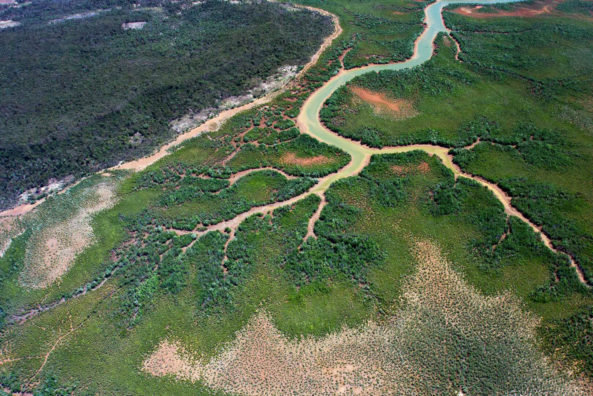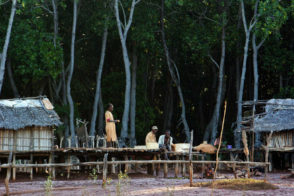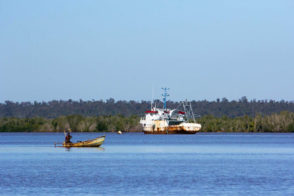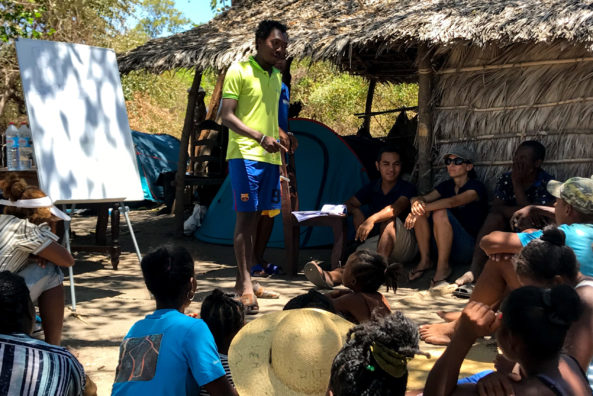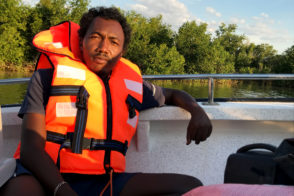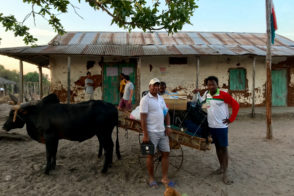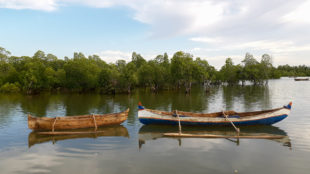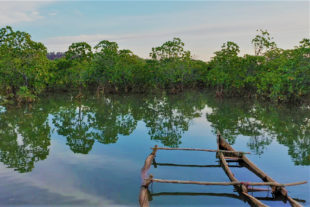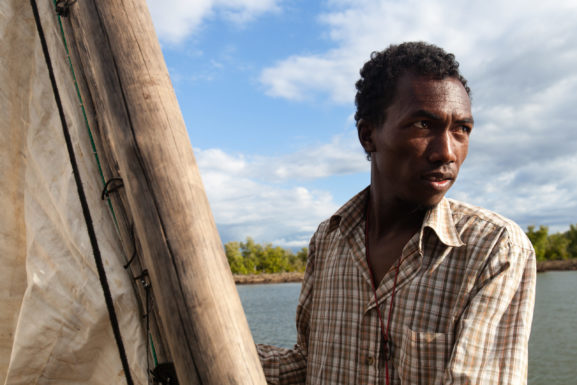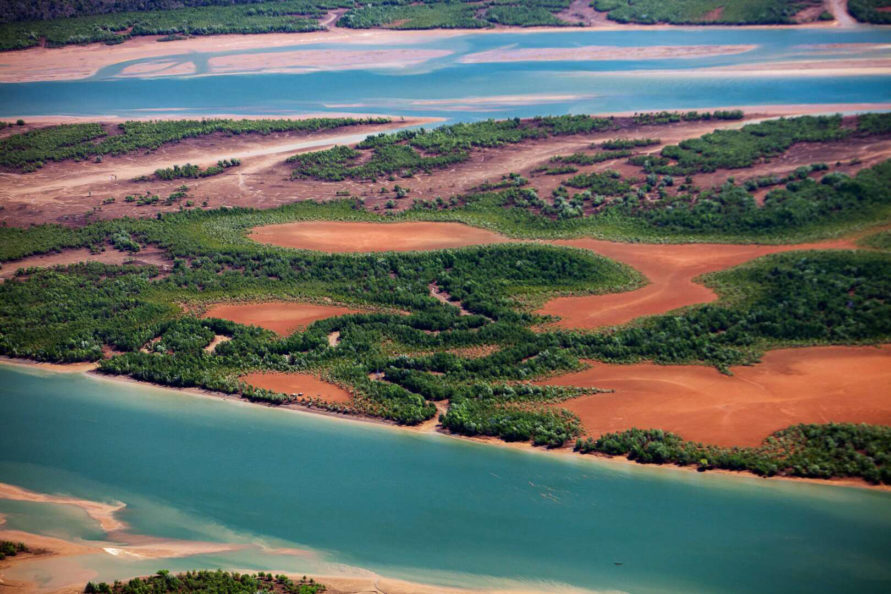This post is also available in:
 French
French
I have been working alongside traditional fishing communities in northwest Madagascar for more than eight years. In this part of the island, as in so many places, marine resources are being depleted by overfishing, destructive fishing and climate change. The region is also home to the country’s second largest mangrove forest, which is threatened by deforestation due to illegal logging for charcoal and construction timber.
I supported the communities to gather together and agree on how they would like to collectively manage their natural resources and avoid overexploiting the mangroves for short-term profit.Alongside the small-scale fishers in the bay of Tsimipaika, where many communities live amongst the mangroves, I have been responsible for coordinating support for community associations for several years. I supported the communities to gather together and agree on how they would like to collectively manage their natural resources and avoid overexploiting the mangroves for short-term profit. The points agreed upon by the community have been formalised in dina – local customary laws that allow natural resource management measures to be put in place at the community level.
In order to have the authority to manage their mangrove resources autonomously, I also supported the communities to approach the Malagasy state for the legal right to do so. The management rights of 6,154 hectares of mangroves were successfully transferred by the Ministry of the Environment to 11 (soon to be 12!) community associations. Today, these associations directly manage their mangroves, which are now divided into permanent reserve zones (where no trees can be cut at all), sustainable use zones (where a limited amount of mangrove forest can be cut) and reforestation zones (where the forest needs to be restored).
These management transfers are enabled by national law and dina – two essential governance tools that allow small-scale fishers to secure their mangroves and fisheries and manage them sustainably.
Since then, I have taken on a new role as Blue Ventures’ Deputy Regional Manager for northwest Madagascar. For the past year, I have been in charge of supporting community governance in the bay of Tsimipaika, but also in Mahajamba Bay – more than 700km away – where small-scale fishers from 14 villages have recently united into seven formalised fishers’ associations. Blue Ventures has been supporting them since 2018 to develop sustainable and locally led resource management techniques that are adapted to their needs and the local context.
Developing models and good practices with communities, and then discussing, adapting and replicating them with other communities, is what makes our work meaningful and impactful.I learned a lot during my experience working with communities in Tsimipaika and I can now use this practical knowledge and adapt it with the fishers of Mahajamba Bay. Developing models and good practices with communities, and then discussing, adapting and replicating them with other communities, is what makes our work meaningful and impactful.
In this story, I share how I used the lessons I learned in Tsimipaika Bay to support the communities of Mahajamba Bay to develop community governance in collaboration with the authorities, who are key allies in the process.
My last visit to Mahajamba Bay was in September and October 2020. I spent time supporting communities in the villages and in the mangroves, talking with fishers during formal meetings or in impromptu discussions under the shade of a tree – this is the heart of my job and the part I enjoy the most.
The earlier you begin discussions with each authority concerned, the better the mutual understanding will be, which opens up greater possibilities for collaboration and support later on.Rather than heading directly to the bay, I began my journey with a series of visits to the authorities in the regional capital, Mahajanga. Of course, working with the Malagasy authorities who manage fisheries, the environment or a particular district is essential to ensure local coherence and durability, but one of the lessons I learned with the communities of Tsimipaika Bay is that timing matters too: the earlier you begin discussions with each authority concerned, the better the mutual understanding will be, which opens up greater possibilities for collaboration and support later on.
In the bay of Tsimipaika, the process of transferring mangrove management to community associations (which includes the development of a management plan that establishes the boundaries of permanent reserves, sustainable use zones and reforestation areas) had been long and complex. Faced with administrative difficulties over a period of three years, we ended up proposing an agreement with the supervisory authority for this transfer, the Regional Department of the Environment and Sustainable Development (DREDD), so that they would approve the plan and support throughout communities in the transfer process.
We learned from this experience in Tsimipaika; when the communities of Mahajamba Bay decided to start the process of taking over the management of their mangrove area, we immediately proposed that they establish an agreement with DREDD to lay a solid foundation of support. I visited DREDD in Mahajanga to prepare for the agreement, but also to arrange for some of DREDD’s representatives to visit the four villages we were working with in the bay. These visits would allow the communities to have open discussions with the authorities, get answers to their questions and demonstrate their commitment to sustainable resource management.
It’s great to see the community associations so motivated and committed”, smiled Fenomanana Jasmin Velontsoa, one of the DREDD’s representatives, after his visit, “It gives confidence in the quality of their future management.”
Once fisheries and mangrove management rules are adopted by community members, it is essential that they are able to enforce them. While in the regional capital, I also visited the Fisheries Monitoring Centre (CSP), which ensures the enforcement of fisheries laws under the authority of the ministry in charge. Experience has shown us that when we work with the CSP from the beginning, they are more willing to ensure training to community members to become surveillance representatives, which then makes it possible for the CSP and the community to carry out collaborative surveillance patrols. For example, the community patrol stops a fisher who practices destructive fishing practices that are prohibited by dina (local customary law), and the CSP patrol seizes destructive fishing gear that is contrary to national law. In a context where law enforcement is a huge issue, and where community surveillance representatives are often afraid to patrol because of a lack of support from other authorities, field collaboration like this is vital.
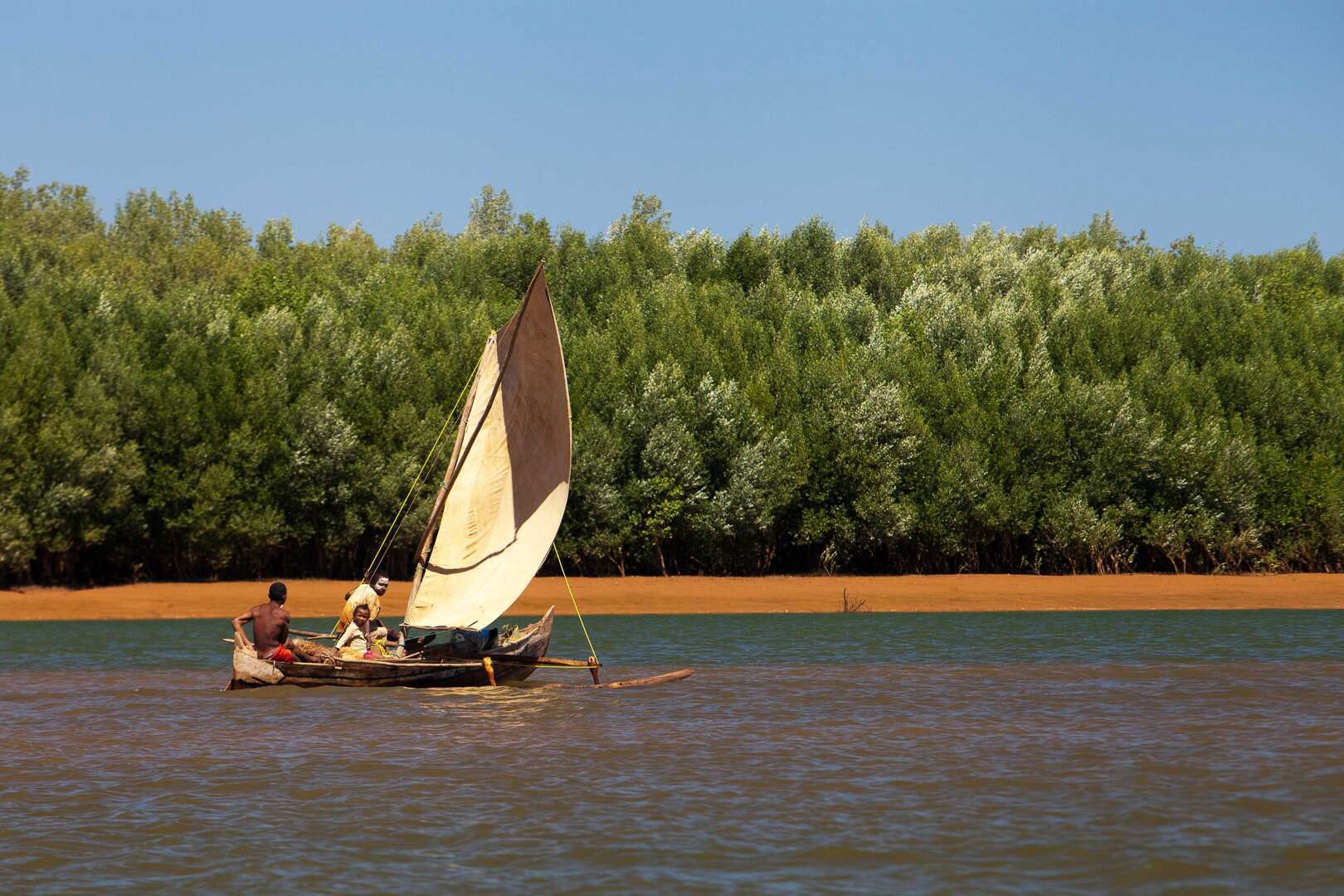
Community surveillance patrols are essential to ban destructive fishing practices and ensure sustainable fisheries for all coastal communities | Photo: Garth Cripps
If you need our help and support, our door is always open to you.”
These words of the District Chief of Mahajanga offered a magnificent conclusion to the last visit on my schedule in Mahajanga and are evidence of the bonds of trust that we have gradually established. Such a favourable opinion from district authorities is vital (and mandatory) for the formal approval of dina; the district can put decrees in place that echo and reinforce the rules enacted by these local customary laws. The communities of Mahajamba Bay certainly have a strong ally at their side!
In the village of Andranoboka, this has proved to be the case. While carrying out awareness-raising activities on the importance of respecting fishing regulations, representatives of the district – alerted by the fishers’ association – observed illegal fishing activities themselves. The district representatives then insisted that the mayor issue a decree at municipality level on the need to respect fishing closures, follow the system of fishing cards (passes that all fishers in Madagascar must have to fish), and abide by the mandatory minimum size of fishing nets to avoid catching juveniles. All these elements will also form part of dina being drawn up by the fishers’ associations to ensure the sustainable management of their natural marine resources.
Since then, every market day the mayor takes advantage of the gathering crowds to remind the community, including local fishers and fishers from elsewhere on the coast, of the importance of respecting the laws which consider their needs and the sustainable conservation of their natural resources.
Of course, such collaborative work with each authority concerned (DREDD, CSP, district, mayor) requires time, listening and being adaptive. But it is worth it, as it creates a strong foundation for sustainable, legitimate and recognised local management of marine resources by community fishers’ associations.
It is the survival of their ecosystems, and therefore their survival, that is at stake.
Read part two of Zo’s story on building community-based governance in Mahajamba Bay
Learn more about how the communities in Tsimipaika Bay took ownership over their mangroves back in 2018


